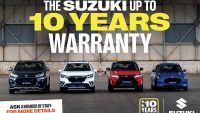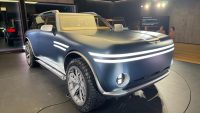 MERCEDES-BENZ is predicting the new car market will switch its preference back to petrol engine models.
MERCEDES-BENZ is predicting the new car market will switch its preference back to petrol engine models.
Fuel prices and the tax burden for diesel models is to herald a resurgence in the popularity of petrol-powered alternatives.
Already, the maker says its C 180 K petrol model pips the C 220 CDI diesel in terms of overall sales volumes.
This small gap will widen next year, with the launch of a new BlueEfficiency variant of the C 180 K.
Nick Williams, product group manager at Mercedes UK, said: ‘I expect to see a switch back to petrol. This will increase with the introduction of stop-start systems, such as that on the new A- and B-Class BlueEfficiency variants.
‘The price of fuel is a major driver in this. And, for company car drivers, the imposition of the 3 per cent Benefit In Kind penalty is a further factor.’
BlueEfficiency variants of the C 180 K emit 149g/km of CO2. They also have a lower list price. Petrol versions are commonly £1000 more expensive than their diesel counterparts. In Mercedes’ case, the difference is £1135.
Yet the C 180 K emits the same CO2 level as the C 200 CDI. It is thus a no-brainer for fleets. The list price is lower, meaning less BIK to pay – and without a 3 per cent penalty added on, too.
Next year, the company will introduce clean petrol versions of the new E-Class. The E 200 CGI is expected to further shift the balance from diesel to petrol.
There is even an added benefit for retained values, and thus, whole life costs. ‘Less fuel use, less tax, lower list prices – they’re simply more desirable cars,’ said Williams.
Expect your customer preferences to shift accordingly.
By Richard Aucock

































